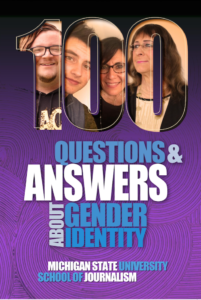The federal government announced big changes in the way the Census Bureau counts the country. The formal March 29 announcement said the Census is combining race and ethnicity into one section and adding a new category.
The categories will be White, Hispanic or Latino, Black or African American, Asian, American Indian or Alaska Native, Native Hawaiian or Pacific Islander and the new one: Middle Eastern or North African.
Hispanic and Latino had been different choices in separate sections. People will now find them together under “What is your race and/or ethnicity?”
Middle Eastern/North African is shorthanded as MENA. Although the term is not new, it has not been widely used. MENA people had been checking Census forms as White, “other,” not answering or trying to write something in.
To some people, the new category, is as fundamental as their identity. Getting the checkbox some had asked for tells them they count and can now be counted.
Here are answers to questions, in the style of the Michigan State University School of Journalism’s Bias Busters series, which answers basic questions about racial, cultural, ethnic, occupational and religious groups. MENA has come up in that series in these guides:
Bias Busters guides that have included MENA people are:
100 Questions and Answers About Arab Americans
100 Questions and Answers About Chaldean Americans
Why have MENA people been considered White?
For decades, the U.S. government has defined White people as those with “origins in any of the original peoples of Europe, the Middle East or North Africa.” There has been a history of the White label has been applied to people and it has affected important considerations, such as immigration. Today, many U.S. people, both those with and without Middle East origins, have said the definition does not fit. Some MENA people say they do not have the same rights and privileges as White people and do not feel the identity fits them.
Will a MENA category mean fewer White people?
No, but it will mean fewer people are counted as White. According to NBC News, 7 million to 8 million people will have a more accurate choice on the Census form than “White” or other. While a slightly lower count of White people will not change their actual numbers, more accurate counting will give MENA people higher visibility in Census and federal programs.
The next census is not until 2030. Do these changes mean anything now?
Yes. The Census process is long and affects many federal, state and local programs. The new standards took effect March 28, and were announced in the Federal Register on March 29. Record keeping and reporting requirements are to change now. Federal agencies that release data about race and ethnicity are required to turn in a public action plan by late September 2025. Surveys and statistics are to be in line with the new requirements by late March 2029. Writing on March 18, before the change was announced, Simon Marshall-Shah, a senior policy analyst at the Michigan League for Public Policy wrote the previous system, “has had significant impacts on many aspects of the lives of MENA Americans and masked many pressing social concerns, like barriers to quality healthcare, limited opportunities for success among MENA small business owners and entrepreneurs, and a lack of understanding by federal agencies regarding health disparities, child well-being, and other social and economic disparities …”

This is how the International Monetary Fund defines the MENA region. Nederlandse Leeuw, CC BY-SA 4.0 <https://creativecommons.org/licenses/by-sa/4.0>, via Wikimedia Commons
Do MENA people have a common race, culture, language, nationality or religion?
No, and the category is not meant to imply that. Like other broad umbrella terms, such as Hispanic, this is a diverse group with important differences. People practice many beliefs, they speak many different languages and this is not a race. Its roots are geographic. The widespread MENA region includes North Africa, the Middle East and Southwest Asia. Members are on the same side of some issues and are polar opposites on others. The Arab American Institute, which called for a MENA category for years, was positive but muted. It posted, “the new Standards deny the racial diversity of the Arab American community by excluding Black Arabs and defining MENA without one of its largest populations, Armenian Americans.”
What ethnicities does MENA include?
Most, but not all members, are of Arab origin or heritage. Arab countries, which are identified by their language, include countries in northern Africa. Some MENA countries the bureau also mentioned, such as Israel and Iraq, are not Arab countries.
Does MENA include Palestinians?
Yes, MENA includes Palestinians as well as Israelis. For example, the United Nation’s Field Operations and Technical Cooperation Division covers 19 MENA places. It lists them as Algeria, Bahrain, Egypt, Iran, Iraq, Israel, Jordan, Kuwait, Lebanon, Libya, Morocco, Oman, Occupied Palestinian Territory, Qatar, Saudi Arabia, Syria, Tunisia, United Arab Emirates and Yemen. The Federal Register that reported the change on March 29 does not list all the countries for either the MENA or Hispanic/Latina categories.
Wasn’t MENA already added in 2020?
No. Research into this has been going on since 2014. Changes like these had been approved during the Obama administration but were shelved by the Trump administration. Almost 10 years ago, National Public Radio reported that adding MENA to the Census “would carry wide implications for legislative redistricting, civil rights laws and health statistics.” In a 2022 research report on MENA people’s self-perception, the authors wrote the classification would allow “researchers to examine the social, economic, and health status of this growing population” and allow for changes to reduce unequal treatment.
How often does the Census change its counting?
This is a big change in the one-every-10-years, or decennial tally of people in the United States. While the Census has been tweaked pretty much every time it has been conducted, government officials and the news media are referring to these changes in terms of decades.



















